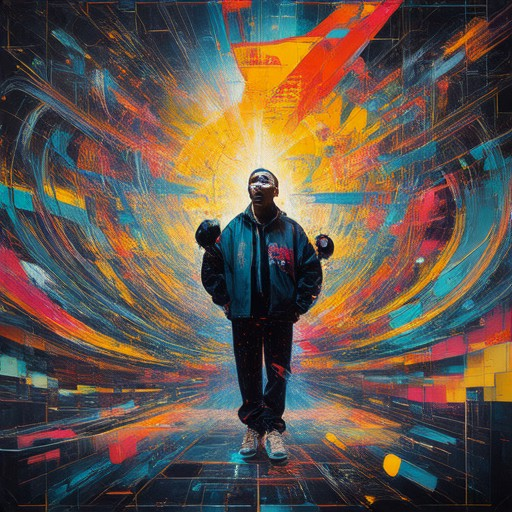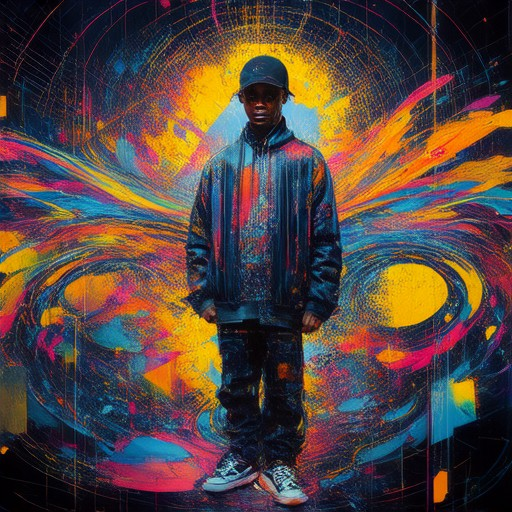Hip-hop music has always been a dynamic and ever-evolving art form, with its beats serving as the heartbeat of its cultural identity. Over time, the landscape of hip-hop beats has transformed, reflecting shifts in artistic vision, regional influences, and technological advancements. Understanding the latest trends in hip-hop music beats is essential for anyone looking to stay ahead in the ever-changing world of music production. From the rise of trap beats to the emergence of drill music, the evolution of hip-hop beats has left an indelible mark on the genre. In this article, we delve into the most popular hip-hop beats, explore what’s trending in 2023, and uncover the types of beats that dominate the scene. We’ll also discuss the tools and techniques producers use to create beats that resonate with audiences, and how staying updated on subgenres and trends can keep your productions fresh and innovative. Whether you’re a seasoned producer or just starting out, this guide will provide valuable insights into the world of hip-hop beats and how they continue to shape the music industry today.
Key Takeaways
– Powerful downbeats drive the rhythm of hip-hop tracks, creating momentum and energy.
– Bass drum placement adds punch, while snare drum usage adds texture to the beat.
– East Coast smoothness vs. West Coast energy defines regional differences in hip-hop beats.
– Southern trap beats bring high-energy vibes with heavy basslines and off-kilter rhythms.
– Hi-hat cuts add crisp rhythm, while percussion layers add depth to the track.
– Sample-based beats pay homage to classic records, giving producers endless creative options.
– Trap beats dominate with heavy bass and futuristic synths, redefining the genre.
– Lo-fi beats focus on raw, analog sound, creating immersive and gritty atmospheres.
– Boom bap brings military precision with tight drum patterns and precise timing.
– Gangsta rap beats match dark themes with intense and brooding sounds.
– Electronic influences push boundaries, blending hip-hop with experimental sounds.
– A solid bassline is the foundation of any hip-hop beat, giving it depth and presence.
– Drum patterns set the rhythm, with kicks driving the energy and snares adding sharpness.
– Melody adds emotional depth, making tracks unforgettable.
– Samples enrich the beat, adding historical context and unique character.
– Layering fills the musical space, enhancing the track’s atmosphere without overwhelming it.
– Tempo and groove define the vibe, whether energetic or laid-back.
– Timing and dynamics keep the track cohesive, with snare drops and bass hits adding excitement.
– Collaboration elevates the beat, bringing fresh ideas and complexity.
– Audience consideration aligns beats with lyrical content, ensuring the track supports the narrative.
– Hip-hop BPM ranges from 85–95, setting the perfect pace for dynamic tracks.

What is the most popular hip-hop beat?
The concept of the “most popular” hip-hop beat is subjective and depends on personal preference, regional influence, and the era of hip-hop music. However, certain beats have stood out over time due to their widespread recognition, versatility, and impact on the genre.
Top 10 Most Influential Hip-Hop Beats
- 1. “Rhythm & Blue” by DJ Premier – Known for its smooth, jazzy vibe, this beat has been sampled extensively and is a staple in hip-hop production.
- 2. “Rumble in the Jungle” by Afrika Bambaataa – A classic boom bap beat that defined early hip-hop culture and inspired many producers.
- 3. “The Bridge” by Pete Rock & CL Smooth – A collaborative effort that blended rap and R&B seamlessly, making it a timeless track.
- 4. “Rhymin & Stealin” by LL Cool J – Features a catchy, upbeat rhythm that became synonymous with 1980s hip-hop.
- 5. “Get Ready” by The Notorious B.I.G. – A track known for its laid-back yet powerful bassline, often referenced in modern productions.
- 6. “Ride Wit Me” by Mobb Deep – A gritty New York City anthem with a dark, brooding atmosphere.
- 7. “Check the Technique” by Eric B. & Rakim – A track celebrated for its intricate lyrical structure and tight beats.
- 8. “Rhythm of the World” by Q-Tip – Features a global fusion of sounds, showcasing the diversity of hip-hop beats.
- 9. “Bring Da Noise” by Public Enemy – A powerful track with a hard-hitting bassline and socially conscious lyrics.
- 10. “Rap City” by Nas – Known for its smooth, melodic flow and intricate wordplay.
Why These Beats Stand Out
These beats have become iconic because of their unique production techniques, memorable hooks, and ability to transcend time. Many of them have been remixed, sampled, and covered by subsequent artists, solidifying their place in hip-hop history.
The Impact of These Beats
These tracks have influenced countless producers and artists, shaping the sound of modern hip-hop. Their rhythms and patterns continue to inspire new generations of musicians and fans worldwide.
For more insights into the world of hip-hop beats, visit AbstractHipHop.com to explore exclusive articles, interviews, and deep dives into the art of hip-hop production.
What Hip-Hop Songs Are Trending Right Now?
As of July 2025, the hip-hop music scene is buzzing with fresh releases and innovative sounds. Here’s a curated list of currently trending hip-hop songs:
- “New Wave” – J Cole feat. Lil Jon
A smooth blend of modern beats and classic hip-hop vibes, this track has been gaining traction on streaming platforms and social media. - “King’s Court” – Kendrick Lamar
Known for its bold lyrics and catchy hooks, this single from Kendrick Lamar’s latest album has taken over playlists and fan discussions. - “Midnight Dreams” – Megan Thee Stallion feat. Snoop Dogg
A high-energy collaboration that mixes trap beats with traditional hip-hop elements, resonating with fans worldwide. - “Bounce Back” – Nicki Minaj
With its infectious chorus and powerful verses, this track has become a anthem for resilience and self-confidence. - “Wild Thoughts” – Doja Cat feat. Future
A hypnotic melody combined with hard-hitting bass lines makes this song a club favorite and viral sensation.
If you’re looking for more, check out our collection of emerging artists and exclusive tracks we’ve curated just for you.
For more trending music, explore these top competitors who are making waves in the industry today.

What Type of Beats Are Used in Hip-Hop?
Hip-hop music is characterized by its unique beats, which play a crucial role in shaping the genre’s identity. Here are the most common types of beats used in hip-hop:
Boom Bap
Boom bap beats are a staple in hip-hop production. They typically consist of heavy basslines, prominent snare drums on the 2nd and 4th beats, and kicks on the 1st and 3rd beats. These beats often have a stripped-down, minimalistic approach, focusing on tight rhythms and solid grooves.
- Heavy basslines
- Snare drums on 2 and 4
- Kicks on 1 and 3
- Additional kicks or snares in 8th and 16th notes
Artists like Nas and Jay-Z frequently use boom bap beats in their tracks.
Trap Beats
Trap beats emerged in the mid-2010s and have become increasingly popular. These beats often feature high-pitched hats, synthetic basslines, and a smoother, more melodic rhythm compared to boom bap. Trap beats are heavily influenced by Southern hip-hop and R&B styles.
- High-pitched hats
- Synthetic basslines
- Smooth, melodic rhythms
- Use of 808 drum machines
Artists like Future and Migos commonly use trap beats in their music.
Lo-Fi Beats
Lo-fi hip-hop beats are characterized by their mellow, laid-back vibe. These beats often incorporate soft, jazzy synths, downtempo drums, and a sense of relaxation. Lo-fi beats are perfect for creating a smooth, nostalgic atmosphere.
- Mellow synths
- Soft drums
- Nostalgic feel
- Chill, ambient textures
Producers like Jinsang and Nujabes are well-known for crafting lo-fi beats.
Gangsta Rap Beats
Gangsta rap beats are often dark, intense, and gritty. These beats typically feature deep basslines, hard-hitting snare drums, and a sense of aggression. They are commonly associated with urban stories and street tales.
- Deep basslines
- Hard-hitting snare drums
- Aggressive rhythms
- Minor key melodies
Artists like Tupac and The Notorious B.I.G. often use gangsta rap beats in their songs.
Hybrid Beats
Hybrid beats combine elements from various genres, such as boom bap, trap, and lo-fi, to create unique and versatile sounds. These beats can be more experimental and may incorporate live instruments alongside electronic production techniques.
- Blends of genres
- Experimental sounds
- Use of live instrumentation
- Modern production techniques
Producers like Metro Boomin and 50 Cent have created successful hybrid beats.
For more information on hip-hop beats and production techniques, visit our Beat Types page or explore our Production Techniques guide.

Which Beats Are Usually Emphasized in Hip-Hop Music?
Hip-hop music is renowned for its dynamic and infectious beats, which serve as the backbone of its sound. The rhythm and timing of the beats in hip-hop are crucial, with various subgenres emphasizing different aspects of the beat. Here’s a breakdown of the most common beats and rhythms featured in hip-hop:
1. Drum Patterns and Timing
- Downbeat Emphasis : A strong, solid downbeat is a hallmark of hip-hop music. This refers to the consistent stress on the “1” beat in the measure, creating a sense of momentum and drive.
- Bass Drum Placement : The bass drum is typically played on beats 1 and 3, providing the thump and punch that defines the low-end of the track.
- Snare Drum Usage : The snare drum is often used on beats 2 and 4, adding texture and rhythm variation. It can also be used more prominently in certain subgenres.
2. Regional Styles
- East Coast vs. West Coast : The beats can differ slightly between regions. East Coast hip-hop tends to have a smoother, more laid-back feel, while West Coast hip-hop often features faster tempos and harder hitting beats.
- Southern Hip-Hop : Southern hip-hop, particularly from cities like Atlanta, often incorporates trap beats, which are characterized by high-energy, off-kilter rhythms and heavy basslines.
3. Common Elements
- Hi-Hat Cuts : The hi-hat is a staple in hip-hop beats, often used to create sharp, crisp rhythms. It can be played openly or closed, contributing to the overall vibe of the track.
- Percussion Layers : Many hip-hop tracks incorporate layers of percussion, including congas, bongos, and other hand percussion, to add depth and complexity to the beat.
- Sample-Based Beats : A significant portion of hip-hop beats are built from samples of classic records, allowing producers to recreate iconic sounds while adding their own twist.
4. Modern Influences
- Trap Beats : Originating from the Southern United States, trap beats have become a dominant force in hip-hop. They feature heavy basslines, 808-style drums, and hypnotic melodies.
- Lo-Fi Beats : Lo-fi hip-hop emphasizes a raw, analog sound with minimal production, focusing on gritty textures and immersive atmospheres.
5. Subgenres and Variations
- Boom Bap : This traditional hip-hop style emphasizes tight, military-like drum patterns with precise timing and a strong emphasis on the snare drum.
- Gangsta Rap Beats : These beats are often darker and more intense, matching the gritty subject matter of gangsta rap.
- Electronic-Influenced Beats : Producers like Flying Lotus and DJ Shadow have blended hip-hop with electronica, creating experimental beats that push the boundaries of traditional hip-hop.
Understanding these elements helps appreciate the diversity and innovation that define hip-hop music. Whether it’s the relentless downbeat of boom bap or the futuristic sounds of trap and lo-fi, the beat is always front and center in hip-hop.
What Does Every Hip Hop Beat Need?
A well-crafted hip hop beat is a blend of various elements that work harmoniously to create the perfect canvas for rap vocals. Here’s a breakdown of the essential components:
- Bassline : The foundation of most hip hop beats, the bassline provides the low-end thump that defines the track’s presence. Without a solid bassline, the beat feels incomplete.
- Drums (Kick, Snare, Hi-Hat) : The rhythm section is crucial. The kick drum acts as the backbone, delivering the primary rhythmic drive. The snare adds sharpness and definition, while high-frequency percussion like hi-hats adds detail and texture.
- Melodic Element : Whether a simple hook or a complex riff, a melodic component gives the track emotional depth and makes it memorable for listeners.
- Samples : Incorporating samples from vinyl records, live instruments, or classic breaks can add unique character and historical context to the beat.
- Layering : Adding atmospheric pads or background sounds fills the musical space, contributing to the track’s depth without overwhelming it.
- Tempo and Groove : The right tempo sets the mood—energetic for fast-paced tracks, laid-back for reflective ones. A tight groove ensures the track feels cohesive and locked-in.
- Timing and Dynamics : Precision in hitting snare drops and bass hits enhances rhythm, while dynamics add excitement and prevent monotony.
- Collaboration : Guest vocals or additional production can introduce fresh ideas, elevating the beat’s complexity and appeal.
- Audience Consideration : The beat should align with the lyrical content and intended vibe, supporting the narrative through its soundscapes.
Together, these elements create a dynamic and engaging track that can carry powerful rap verses to the forefront.

What BPM is hip hop usually?
Hip-hop music typically ranges between 85–95 BPM . This tempo provides a solid foundation for the genre’s iconic beats, allowing for a mix of rhythm and melody. The exact BPM can vary depending on the subgenre and producer’s style.
Here’s a breakdown of common tempos for different hip-hop styles:
- Rap Music: Often falls between 90–100 BPM, creating a balanced rhythm for verses and choruses.
- Trap Music: Usually faster, around 100–110 BPM, emphasizing high-energy tracks with heavy basslines and synth usage.
- Boom Bap: Slower tempos, often 80–90 BPM, focusing on classic hip-hop beats with precise drum patterns.
- Southern Rap: Can be quicker, ranging from 100–110 BPM, reflecting the energetic vibe of Southern hip-hop.
The tempo may also drop during a track for dynamic changes, adding complexity to the music. Drum patterns, particularly hi-hat and snare placement, significantly impact the overall feel, contributing to the genre’s distinctive rhythm.





0 Comments